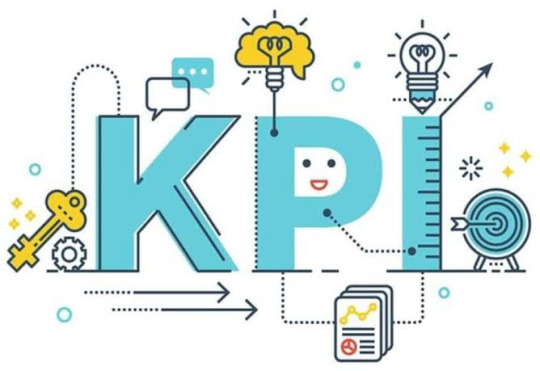#Key performance indicators
Explore tagged Tumblr posts
Note
How do preorder numbers affect your side of production? I’ve seen people saying that high preordering numbers lead to less time/budget to make the next game, because higher ups see it as proof that a studio/series can ride on name recognition instead of quality; is that true to your experience? In general, for a given game you worked on, would you prefer that people preordered or waited to day 1 purchase? Or does it not make a meaningful difference either way? Thanks!

Up until around 2014, preorder numbers were strongly correlated with financial success. They were used as the main metric for determining an upcoming game's chance of hitting its goals. Unfortunately, this caused a common feedback cycle problem with key performance indicators - the more you optimize for the metric itself, the less that metric continues to correlate to what you actually want to know. Publishers and retailers pushed various tactics to pressure customers to preorder, which did result in more preorders. However, the artificially-juiced preorder numbers didn't correlate as strongly with the success of the games. As lifestyle games grew into the biggest chunk of the market, preorder importance fell even more because it was the lifestyle game populations that were most strongly correlated with financial success.

The quality element you mention has nothing to do with preorders. Most games have two to four years of total development time before they ship. Preorders for those games often aren't available until a few months before the release date. By the time the preorders numbers actually come in, we're nearly finished with the development process. The timing doesn't line up at all, there is no way we can cheap out on quality in the last few months of development when the majority of that work is already complete.

As for whether I think players should preorder... I'll tell you what I do personally when it comes to purchasing games. I don't care much for preorder bonuses in general - they are almost always very small and won't affect the overall gameplay in any significant way. Preorder bonuses are generally limited to cosmetics at best, and the gameplay itself matters much more to me than having a particular outfit or weapon skin. There are some games I will preorder because I really like the game or franchise and I am concerned that the publisher has limited print runs of that game (Atlus, for example, is famous for having small print runs). Aside from that, I usually wait to see how the game does at launch before buying in. I don't feel much pressure to get in on day 1. Waiting a week or two won't kill me, and I've got plenty of other games to play and things to do in the meantime.
[Join us on Discord] and/or [Support us on Patreon]
Got a burning question you want answered?
Short questions: Ask a Game Dev on Twitter
Long questions: Ask a Game Dev on Tumblr
Frequent Questions: The FAQ
30 notes
·
View notes
Text

Employee performance metrics are essential tools used to track productivity, quality, and efficiency at work. These metrics provide measurable data that helps evaluate an employee’s contribution to organizational goals. From task completion rates to customer satisfaction scores, these indicators offer a complete picture of performance. Businesses use them to reward top performers and identify areas needing improvement. Regular tracking ensures continuous growth and accountability.
0 notes
Text
The Art of Brand Partnerships: A Symphony of Success
Brand partnerships are like orchestras—when the right players come together, they create something harmonious and powerful, leaving a lasting impression on the audience. Continue reading The Art of Brand Partnerships: A Symphony of Success
#apple#Brand partnerships#iPod#Key performance indicators#Nike#Nike+iPod Fitness#Spotify#Starbucks#Strategic alignment
1 note
·
View note
Text
Measuring Success: Essential KPIs for Training and Placement Excellence !!
Abstract: Key performance indicators (KPIs) for training and placement include: Training effectiveness KPIs These include the training attendance rate, course completion rate, average time to completion, post-training assessment results, learner satisfaction rate, learner retention rate, job performance impact, and training ROI. Recruitment KPIs These include the cost per hire, source…

View On WordPress
0 notes
Text
Mastering KPIs: From Basics to Advanced Metrics
KPIs, or Key Performance Indicators, are everywhere in business, but they’re often misunderstood or misused. Having spent years working with teams across different industries, I’ve seen how the right KPIs can drive success, while the wrong ones can create confusion or, worse, false confidence. So, what exactly are KPIs, and how do you make sure you’re focusing on the ones that actually…
#actionable metrics#business metrics#business performance#Business Strategy#data-driven decisions#Key Performance Indicators#KPI tree#KPIs#measuring success#North Star Metric#Organizational Development#primary metrics#secondary metrics#team alignment
0 notes
Text

Why IS CTR one of the most vital Meta Ads Key Perfromance Indicators?
Click-Through Rate (CTR) is a critical metric in digital marketing, offering insights into the effectiveness of online advertising campaigns. In this article, we’ll explore what CTR is, why it’s essential, and how it applies to real-life scenarios. Additionally, we'll compare CTR in digital ads to other forms of advertising.
What is Click-Through Rate (CTR)?
CTR measures the ratio of users who click on a specific link to the number of total users who view an ad or email. It's calculated by dividing the number of clicks by the number of impressions (views) and then multiplying by 100 to get a percentage.
Why is CTR Important?
CTR is crucial for several reasons:
Measure of Engagement: A high CTR indicates that your ad or content is engaging and relevant to your audience. It shows that users are interested enough to take action.
Quality Score: For platforms like Google Ads, a high CTR can improve your Quality Score, which can lower your cost-per-click (CPC) and improve your ad placement.
Return on Investment (ROI): CTR directly impacts your ROI. Higher CTR means more traffic and potential conversions for the same budget, making your campaigns more cost-effective.
Ad Relevance: It helps in understanding how well your ad matches the audience's interests and expectations. Ads with higher CTRs are typically more aligned with what users are looking for.
Optimization Insight: Monitoring CTR provides insights into which ads or keywords are performing well and which ones need improvement. This allows for more targeted and efficient ad spend.
Real-Life Scenarios of CTR
Let’s explore some practical applications of CTR across different domains:
Email Marketing
In email marketing, CTR is used to measure the effectiveness of email campaigns. A higher CTR means that more recipients are clicking on the links within your email, indicating that the content is compelling and relevant.
Example: A company sends out a newsletter to 10,000 subscribers, and 500 of them click on a link in the email. The CTR would be 5%. By analyzing this, the company can determine the effectiveness of their email content and adjust their strategy accordingly.
Social Media Campaigns
On platforms like Facebook, Twitter, or LinkedIn, CTR is used to measure the engagement of ads and posts. It helps marketers understand which content resonates best with their audience.
Example: A fashion brand runs a Facebook ad campaign targeting young adults. If the ad receives 20,000 impressions and 1,000 clicks, the CTR is 5%. The brand can use this data to refine their targeting and creative strategy.
Search Engine Advertising
In search engine advertising, such as Google Ads, CTR is a key metric for assessing the performance of ad campaigns. It affects the Quality Score and, subsequently, the ad’s position and cost.
Example: A local bakery runs a Google Ads campaign for "best cupcakes in town." If the ad gets 2,000 impressions and 100 clicks, the CTR is 5%. A high CTR indicates that the ad copy and keywords are effective.
Comparing CTR in Digital Ads to Other Advertising Forms
CTR is predominantly associated with digital advertising, but its concept can be compared to traditional advertising methods.
Digital Ads vs. Print Ads
In print advertising (e.g., newspapers, magazines), measuring engagement can be challenging. Metrics like readership or circulation don’t provide direct feedback on how many people took action after seeing an ad. In contrast, digital ads offer precise CTR data, allowing marketers to see exactly how many users clicked on their ad.
Example: A printed ad in a magazine may reach 10,000 readers, but it’s unclear how many were motivated to visit the store. A digital ad, however, can show that out of 10,000 views, 300 people clicked the link, resulting in a 3% CTR.
Digital Ads vs. TV/Radio Ads
Television and radio ads measure success through metrics like reach and frequency but lack direct engagement metrics like CTR. While TV and radio can create broad awareness, digital ads provide measurable action taken by the audience.
Example: A TV ad campaign for a new smartphone might reach millions but doesn't offer precise data on how many viewers visited the website. A digital ad campaign, on the other hand, shows a clear CTR, indicating direct engagement.
Optimizing CTR in Digital Advertising
Improving CTR involves several strategies:
Compelling Ad Copy: Crafting engaging and relevant ad copy that addresses the audience's needs and pain points can significantly boost CTR. Use action-oriented language and clear CTAs.
Tip: Instead of saying, “Learn more about our products,” try “Discover your perfect fit today!”
A/B Testing: Running A/B tests with different ad variations helps identify which elements resonate best with your audience. Test different headlines, images, CTAs, and copy to see what drives higher engagement.
Example: Test two versions of an ad with different headlines to see which one generates a higher CTR.
Targeted Audience: Ensure your ads are reaching the right audience by using precise targeting options. Utilize demographics, interests, behaviors, and retargeting to reach users who are most likely to engage.
Insight: A narrowly targeted ad campaign can often achieve a higher CTR than a broad campaign.
Visual Appeal: High-quality, eye-catching images or videos can attract more clicks. Ensure your visuals are relevant and appealing to your target audience.
Tip: Use bright colors and clear, high-resolution images that stand out in the user’s feed.
Relevance and Value: Ensure that your ads are relevant to the users and offer real value. Ads that solve a problem or meet a need are more likely to get clicks.
Example: If you’re advertising a winter coat, highlight its features that solve a common problem, like staying warm in extreme cold.
Ad Placement and Timing: Place your ads where your audience is most active and at times when they are most likely to engage. Analyze your audience’s behavior to optimize ad placements and timings.
Tip: Run ads during peak online activity times for your target audience.
Conclusion
Click-Through Rate (CTR) is an essential metric for measuring the effectiveness of digital ad campaigns. It provides insights into user engagement, ad relevance, and the overall success of marketing efforts. By understanding and optimizing CTR, businesses can improve their advertising strategies, enhance ROI, and achieve better results. Whether in email marketing, social media campaigns, or search engine advertising, CTR remains a vital tool for digital marketers aiming to connect with their audience and drive meaningful interactions.
#ecommerce#business#entrepreneur#branding#digital marketing#seo services#meta ads#google ads#facebook ads#key performance indicators
1 note
·
View note
Text
Frequently asked questions on lagging indicators in Safety
Frequently asked questions on lagging indicators in safety 1.What are the lagging indicators in safety performance measurement? Lagging indicators measure the occurrence of events or activities in the past and their frequency .The lagging indicator of measures can be the number of illnesses in a workplace, or number of Accidents that have happened in a given organization, or even the number of…
0 notes
Text
What Business KPI Should New Businesses Focus On?

Unlock the full potential of your business with PathQuest's insights on Business KPIs in 2024. This blog delves into the critical Key Performance Indicators that drive success, offering practical tips and strategies to monitor and enhance your business performance. Stay ahead of the competition by understanding which metrics matter most and how to leverage them for growth. Read on to equip your business with the knowledge to thrive in today's competitive landscape. Read more at https://pathquest.com/knowledge-center/blogs/business-kpi-in-2023/
0 notes
Text
#kpi metrics#kpi stands for#kpi vs okr#kpi dashboard#kpi solutions#smart kpi#kpi analysis#kpi and okr#kpi benchmarks#key performance indicators#key performance indicators (kpis)#key performance indicators for employees#key performance indicators vs metrics#key performance indicators for project management#kpi key performance indicator#key performance indicator and dashboard#key performance indicators advantages and disadvantages#key performance indicators articles#key performance indicators and critical success factors#key performance indicators benefits#blog on key performance indicator#key performance indicator calculator#criteria for key performance indicator#difference between objective and key performance indicator
0 notes
Text
If one of your key performance indicators is the number of monthly users on your platform, you have little incentive to remove bots and fake accounts – especially if you know that they might make up a significant proportion of your actions users.
"Going Dark: The Secret Social Lives of Extremists" - Julia Ebner
#book quote#going dark#julia ebner#nonfiction#key performance indicators#kpi#incentives#bots#fake accounts#active accounts
0 notes
Text
Content Marketing Mastery: Drive Engagement & Growth
Content marketing has emerged as a cornerstone for businesses aiming to build brand awareness, engage with their audience, and drive conversions in the digital age. With consumers becoming increasingly discerning and savvy, mastering the art of content marketing has never been more crucial. In this comprehensive guide, we'll explore strategies to help you harness the power of content marketing effectively.

0 notes
Text
5 KPIs Powering AI Startups

In the fast-paced world of artificial intelligence (AI), startups constantly seek innovative ways to carve out their niche, differentiate their products, and capture the attention of a discerning customer base. Within this highly competitive landscape, the ability to launch and effectively measure the impact of marketing campaigns is no longer a luxury—it's a necessity. This is where the critical role of metrics, including key performance indicators (KPIs), comes into play, serving as the compass that guides AI startups through the complex and often tumultuous waters of market penetration and customer acquisition.
Importance of Metrics in Marketing
Measuring marketing performance is essential for AI startups, which often face challenges like limited budgets and the need to explain complex technologies. Metrics provide tangible insights beyond surface-level data, enabling startups to gauge the health and potential of their growth trajectory. By analyzing the right metrics, startups can optimize their strategies, allocate resources efficiently, and pivot quickly in response to market feedback.
Understanding Marketing Metrics
In marketing analytics, there's a distinction between vanity metrics and actionable metrics. Vanity metrics, such as social media followers or page views, may look impressive but often lack meaningful insights. On the other hand, actionable metrics, like conversion rates and customer acquisition costs (CAC), are directly tied to business objectives and provide valuable insights into customer behavior and marketing effectiveness.
Setting Clear Objectives
Establishing clear, measurable objectives is foundational to any successful marketing strategy. For AI startups, objectives should be specific, measurable, achievable, relevant, and time-bound (SMART). By setting precise goals aligned with the startup's overarching business objectives, startups can tailor their marketing strategies effectively and track progress accurately.
Key Performance Indicators (KPIs) for AI Startups
In the high-stakes world of AI startups, where innovation meets market realities, understanding and leveraging key performance indicators (KPIs) is essential. These metrics not only lead the path to growth but also ensure that every step taken is informed, intentional, and aligned with the startup's overarching objectives. Below, we will discuss critical KPIs for AI startups, exploring their definitions, calculations, and strategic importance, alongside insights on leveraging analytics tools for continuous improvement.
Customer Acquisition Cost (CAC): CAC represents the average cost of acquiring a new customer and is crucial for assessing the efficiency and sustainability of growth strategies. While industry benchmarks can provide insights, startups should focus on optimizing their CAC to ensure cost-effective customer acquisition.
Customer Lifetime Value (CLTV): CLTV forecasts the total value derived from a customer throughout their relationship with the business. Understanding CLTV helps startups determine how much to invest in acquiring customers and identify valuable customer segments for targeted marketing efforts.
Conversion Rates: Conversion rates measure the percentage of potential customers who take desired actions, such as purchasing or signing up for a trial. Tracking conversion rates at each stage of the marketing funnel helps identify bottlenecks and optimize the customer journey for improved conversion.
Engagement Metrics: Metrics like time on site, pages per session, and repeat usage are vital indicators of product value and customer satisfaction. High engagement levels often correlate with higher retention rates and customer lifetime value, making them essential for assessing product-market fit and user experience.
Return on Investment (ROI): ROI measures the efficiency and effectiveness of marketing expenditures by comparing sales growth to marketing investment. Understanding ROI enables startups to make informed decisions about budget allocation and optimize marketing strategies for maximum impact.
Case Studies: Success Stories
Examining the success stories of AI startups provides valuable insights into the practical application of metrics-driven marketing strategies. For example, AlphaAI reduced CAC by implementing targeted content marketing, while BetaAnalytics increased CLTV through personalized user experiences. GammaVision doubled marketing ROI through rigorous experimentation and A/B testing.
Conclusion: In conclusion, a metrics-driven approach is essential for AI startups to navigate the complexities of the marketing landscape successfully. By focusing on key performance indicators like CAC, CLTV, conversion rates, engagement metrics, and ROI, startups can optimize their marketing strategies, allocate resources effectively, and achieve sustainable growth. Continuous measurement, analysis, and optimization are critical for success in the dynamic and competitive AI market.
#AI Startups#Key Performance Indicators#Data-driven marketing#Customer acquisition cost#Customer lifetime value#Conversion rates#Engagement metrics#Marketing ROI#Analytics tools#Data-driven culture
0 notes
Text
FMCG Branding Strategy: Key Insights for Business Success - Comprehensive Guide
Navigate the dynamic world of FMCG with insights on launching products, defining target audience, storytelling, sustainable practices, and data-driven decisions in FMCG branding strategy.
#FMCG Branding Strategy#fast-moving consumer goods#FMCG#FMCG product#FMCG market#FMCG brands#key performance indicators#FMCG companies#Artificial Intelligence
0 notes
Text
Choosing the Right Key Performance Indicators (KPIs) for Your Dashboard
Introduction When setting up a dashboard, it is crucial to choose the right Key Performance Indicators (KPIs) that align with the specific section or area you are monitoring. KPIs are measurable metrics that help organizations track progress towards their goals and objectives. In this blog post, we will explore the importance of selecting relevant and measurable KPIs for your dashboard, and…

View On WordPress
0 notes
Text
youtube
Team Members KPIs are Important - Lets See How Chat GPT Can Assist
Managing a strong team and work culture is made easy with Chat GPT. In this video we used Chat GPT to create KPIS for our team members.
#team kpi#key performance indicators for team leaders#kpi of team leader in bpo#employee engagement kpi#kpi of team leader#kpi for sales team#kpi for design team#kpi for development team#teamwork kpi#marketing team kpis#how to use chatgpt#chat gpt how to use#chatgpt how to use#how can i use chatgpt#how to use gpt#how do i use chatgpt#key performance indicators#key performance indicator#team members kpis#how chat gpt can assist#kpis are important#Youtube
0 notes